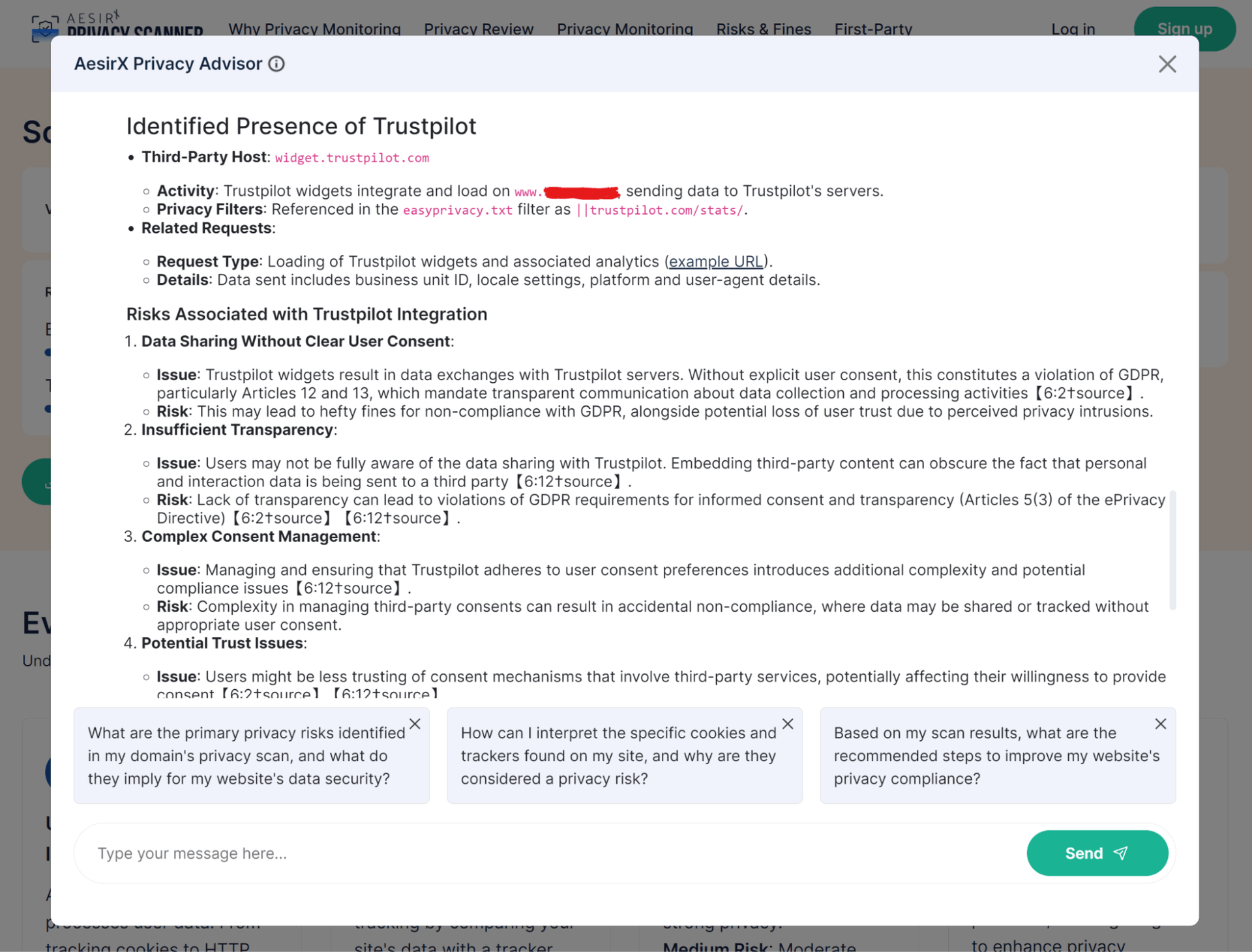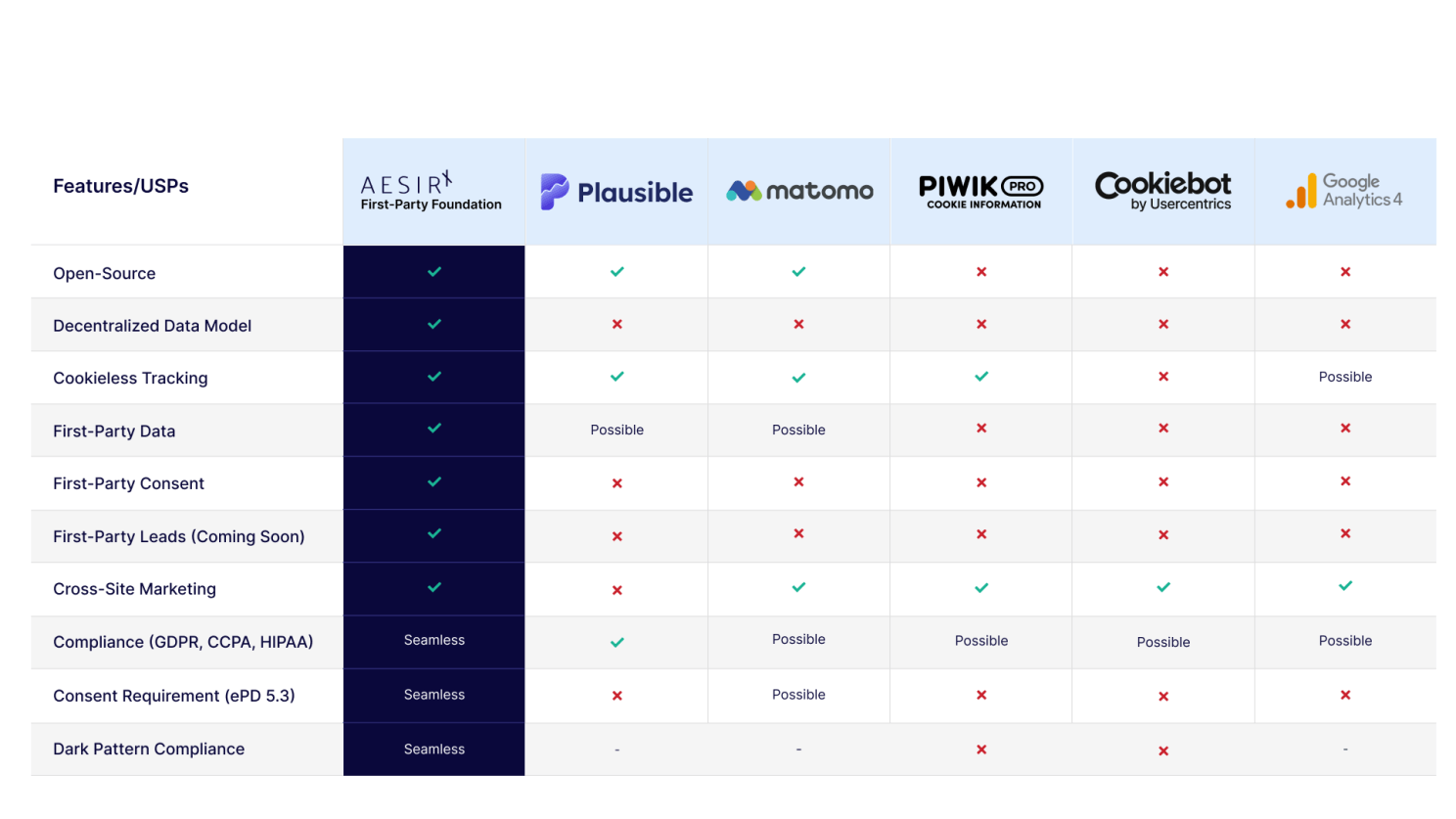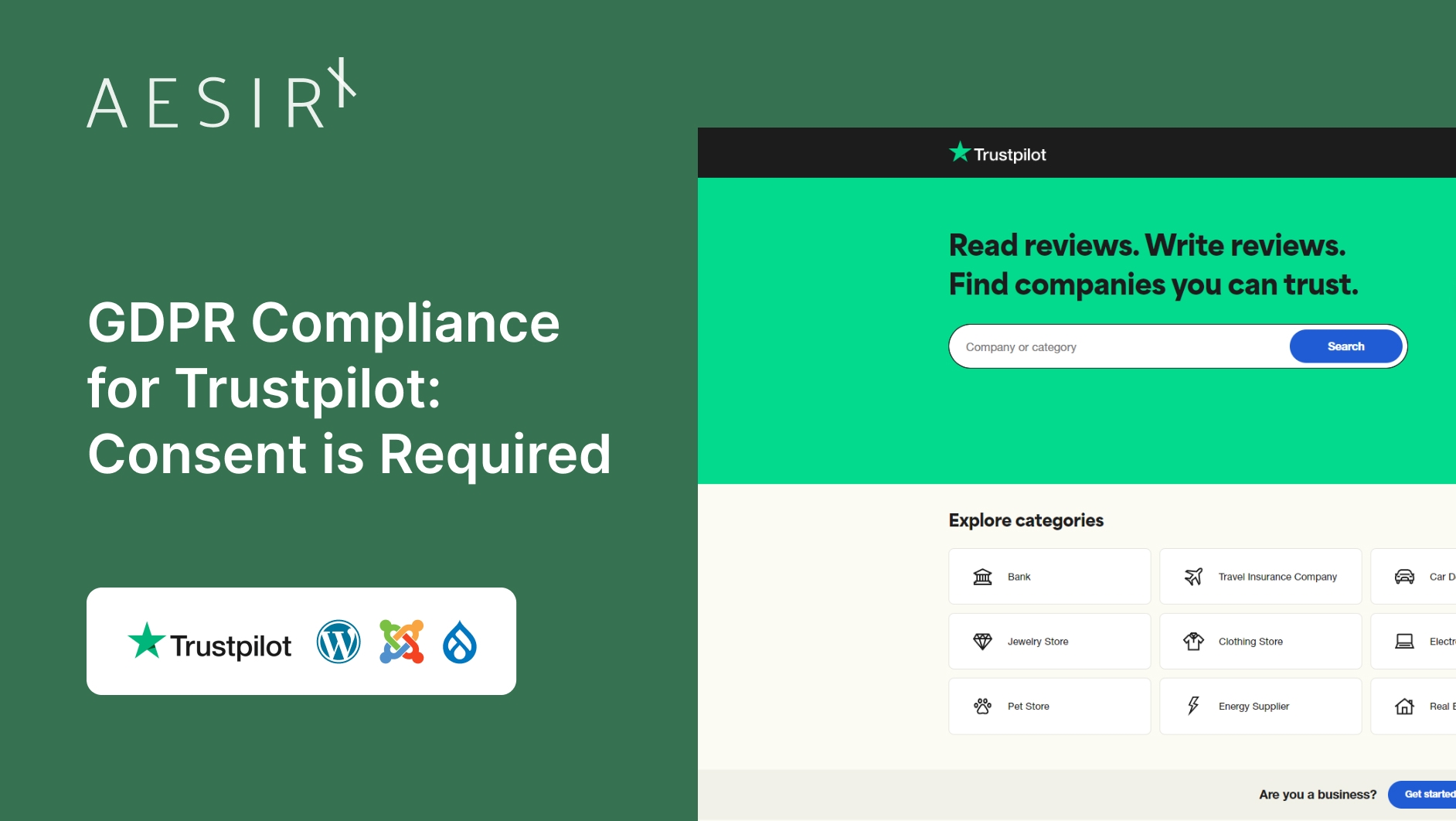Customer reviews play an essential role in shaping consumer perceptions and driving business success. Trustpilot, a leading platform for online reviews, enables businesses to showcase customer feedback directly on their websites. However, while integrating Trustpilot widgets can enhance credibility and trust, it also brings significant privacy challenges, particularly concerning compliance with the General Data Protection Regulation (GDPR) and Article 5(3) of the ePrivacy Directive. Ensuring that user consent is obtained before loading third-party services like Trustpilot, as required under the ePrivacy Directive.
This article is especially relevant for website owners on platforms such as WordPress, WooCommerce, Joomla!, and Drupal, integrating an analytics plugin can support data privacy compliance. These platforms must prioritize GDPR and ePrivacy Directive compliance to protect user data and build credibility with their audiences.
The inspiration for this article comes from thousands of scanned websites and e-commerce solutions in the AesirX Privacy Scanner. We found that implementing Trustpilot's widget is one of the main causes of compliance risk due to lack of consent.
What is Trustpilot?
Trustpilot is a widely used platform for online reviews, allowing businesses to display customer feedback. However, integrating Trustpilot widgets on websites can introduce significant privacy concerns, particularly regarding GDPR and ePrivacy Directive compliance.
Trustpilot Integration
- Third-Party Host: widget.trustpilot.com
- Typical Data Loaded: Widgets display user reviews, interaction data, and potentially tracking data related to user interactions with the widget.
- Privacy Concern: Trustpilot widgets often load without obtaining informed and explicit user consent, indicating potential non-compliance with GDPR and the ePrivacy Directive.
Legal Considerations
GDPR and ePrivacy Directive Compliance
Under the General Data Protection Regulation (GDPR) and Article 5(3) of the ePrivacy Directive, stringent requirements exist for user data protection and privacy, including:
- Consent: Explicit, informed consent must be obtained from users before loading third-party services that track and process personal data.
- Transparency: Users must be informed about what data is being collected, how it’s used, and who it’s shared with.
- Data Minimization: Only essential data should be collected and processed.
Compliance and Trustpilot
- Tracking and Profiling: Trustpilot may collect data on user interactions with the widget, contributing to user profiling and behavior analysis.
- Cross-Border Data Transfer: User data may be transferred to servers outside the EU, potentially violating GDPR's data transfer regulations without appropriate safeguards.
Key Issues Identified
- Lack of Explicit Consent: Trustpilot widgets are loaded upon page visit, without obtaining explicit user consent, violating GDPR and ePrivacy Directive requirements.
- Insufficient Information: Users may not be adequately informed about the extent of data collection and processing involved with Trustpilot integration.
- Third-Party Data Sharing: User data interacts with third-party servers without sufficient transparency or control for the user.

Recommendations to Ensure Compliance
Implement a Consent Management Platform (CMP)
- Integrate a first-party CMP as AesirX First-Party Product Suite to present a clear consent banner before loading any third-party widgets, including Trustpilot.
- Ensure the consent banner provides detailed information about the data being collected and its purpose.
Transparent Privacy Policy Updates
- Update the privacy policy to include detailed descriptions of all third-party services, including Trustpilot, specifying data collection and processing activities.
- Make the policy easily accessible and written in clear, non-technical language.
Delay Loading Third-Party Widgets
- Implement a mechanism to delay loading Trustpilot widgets until after user consent is obtained.
- Consider lazy-loading techniques to ensure widgets are only loaded upon user interaction or explicit consent, aligning with privacy-friendly marketing.
Use Privacy-Friendly Alternatives
- Evaluate first-party solutions or alternative review platforms with better privacy practices.

Consent is Required
Loading Trustpilot widgets without explicit and informed user consent poses significant legal risks under GDPR compliance and the ePrivacy Directive. Enabling compliance involves implementing robust consent mechanisms, updating privacy policies for transparency, and leveraging tools like AesirX Analytics to explore privacy-friendly alternatives. Adopting these measures will help reduce legal risks, enhance user trust, and align the website's practices with GDPR and ePrivacy Directive requirements.
For website owners on platforms such as WordPress, WooCommerce, Joomla!, and Drupal, adhering to these recommendations is vital. By doing so, they can improve their privacy posture, ensuring a safer and more compliant user experience, and fostering greater confidence among their site visitors.
Are you ready to ensure your use of TrustPilot is compliant and trustworthy? Discover how AesirX solutions can help you confidently handle digital privacy requirements.
If you are in doubt about your own site or e-commerce solution you can scan your website with AesirX’s Free Privacy Scanner and get a detailed compliance report.
Ronni K. Gothard Christiansen // VikingTechGuy
Creator, AesirX.io
About the AesirX Privacy Scanner:
The AesirX Privacy Scanner is a powerful tool designed to ensure that websites comply with the stringent requirements of the ePrivacy Directive and GDPR. Using the EU's EDPS (European Data Protection Supervisor) Inspection Tool, AesirX Privacy Scanner thoroughly scans websites to identify non-compliant elements, including cookies, trackers, and beacons.
AesirX also offers a free Privacy Advisor AI Assistant that helps to explain the scanned results from the EDPS Inspection Tool and offers concrete recommendations on what is needed to resolve compliance issues found in your scan result.
By utilizing these tools, your businesses can receive detailed reports and actionable insights to rectify compliance issues and avoid potential fines.




